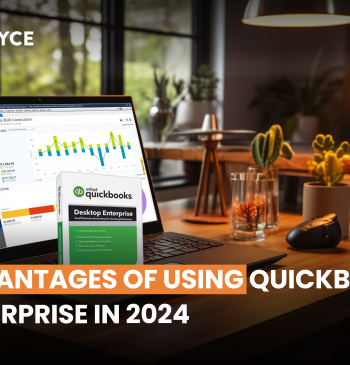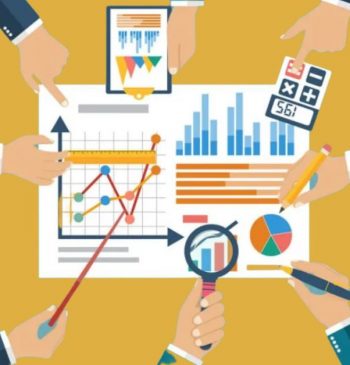18 Feb

A business must use three main types of accounting to track its income and expenses most efficiently. These include financial accounting, cost accounting, and management accounting.
In this article, we will further discuss three main types and other common types of accounting one by one.
Table of Contents
Three Main Types of Accounting
- Financial Accounting.
- Cost Accounting.
- Management Accounting.
Other Types of Accounting.
- Tax Accounting.
- Social Responsibility Accounting.
- Governmental Accounting
- Public Accounting.
- Forensic Accounting.
- Auditing Accounting.
Financial Accounting.
The main purpose of financial accounting is to systematically record business transactions. Ascertain the profit or loss of the accounting by preparing an income statement, and present the business’s financial position by designing the balance sheet.
Example.
A person sets up a business with $50000 in cash. As per this example, money in an asset account increases and, therefore, will be debited with $ 50000.The capital, which is also growing, will be credited with $ 50000.
Component of Financial Accounting:
- Liability
- Assets
- Equity
- Income
- Cost
| Common Financial Reports | Common Management Reports |
| Income statement | Inventory Reports |
| Statement of cash flow | Cost of goods sold |
| Balance sheet | Departments reports |
Cost Accounting
Cost accounting is a form of managerial accounting that aims to capture a company’s total cost of production, by assessing the variable cost of each step of production and fixed cost, such as lease expenses.
The main purpose of cost accounting is to ascertain the total cost and per-unit cost of goods produced and services rendered by a business. While it also estimates the price in advance and helps management exercise strict control over the cost.

Types of costs
- Variable cost
- Fixed cost
- Operating cost
- Direct cost
Example.
Statement of cost of ABC factory
| Particulars | Amounts |
| Raw materials-Opening stock | 50,0000 |
| Add: Purchases during period | 145,000 |
| Less: Raw materials closing stock | 40,000 |
| Cost of material consumed | 155,000 |
| Add: Direct labor | 100,000 |
| Prime cost | 255,000 |
| Add: Work overhead | 40,000 |
| Work cost | 295,000 |
| Add: Administration overheads | 20,000 |
| Cost of production | 315,000 |
| Add: selling and overheads distribution | 30,000 |
| Total sales of cost | 345,000 |
| Finished units | 100,000 |
| Cost of sales per units | $3.45 per unit |
Management Accounting
The main objective of management accounting is to present the accounting information in such a way to assist management in controlling and planning the operations of a business.
The management accountant uses various techniques and concepts to make the accounting data more useful for managerial decision-making. These techniques include ratio analysis, budgetary control, and cash flow statements.
Example.
Stephen is the CEO of a newly established company. For the quarter ended, he has the following pending tasks that must be completed in time
- Preparation of financial statements
- Budgeting for the launch of new products
- Preparation of tax returns
Whom should Stephen hire?
For the preparation of the financial statement. Stephen should hire a financial accountant. Financial statements represent a company’s annual performance and thus only require the presentation of data.
However, to prepare budget and tax returns, a management accountant should be hired. Both of these tasks require internal information and an analysis of past trends to estimate future expenses.
Tax Accounting

Tax accounting is a structure of accounting methods focused on taxes rather than the appearance of a public financial statement.
This accounting is governed by the internal revenue code, which order the specific rules that individuals and companies must follow when preparing their tax returns.
This field is concerned with the proper compliance with tax regulations, tax filing, and tax planning to reduce a company’s tax burden in the future. There are multiple tax specialties, Tracking word the tax manager position.
Forensic Accounting
Forensic accounting is a unique combination of auditing, accounting, and investigative techniques.
This accounting is used to investigate the financial records of individuals or businesses. It is frequently used by police departments, banks, attorneys, and companies examining financial transactions and later providing those findings in a complete report.
Forensic accounting aims to gather available documentation and accurately and comprehensively accounts for all transactions in financial statements.
Public Accounting
Public accounting refers to businesses that provide accounting advice to clients based on their needs. For example, they can work in auditing, assist with tax returns, consult on producers tailored to technology installations or a computer program, and provide legal advice.
Governmental Accounting
Government accounting refers to recording and managing all financial transactions incurred by the government, which includes its income and expenditures.
Government accounting tracks the movement of money through different agencies and makes sure that budgets are kept to or met.
Auditing Accounting
Auditing accounting involves reporting and tracking financial activity for a business. However, auditing is designed to provide an independent analysis of economic activity to ensure that a company records transactions following good rules and standards.
There are two types of auditing, internal and external auditing. An independent third party reviews a company’s financial statement in external auditing. This is to make sure they are presented correctly and comply with GAAP.
Internal auditing involves evaluating how a business divides up accounting duties, who is authorized to do what accounting task, and what procedures and policies are in place.
Conclusion
The accounting and accounting types help to ensure the profits of the business. Whether large or small, every business needs to maintain a proper accounting system to show its financial position. It also helps the interested parties to decide on the progress of the business productivity.
Marjina Muskaan has over 5+ years of experience writing about finance, accounting, and enterprise topics. She was previously a senior writer at Invyce.com, where she created engaging and informative content that made complex financial concepts easy to understand.
Related Post
Copyright © 2024 – Powered by uConnect



Marjina Muskaan